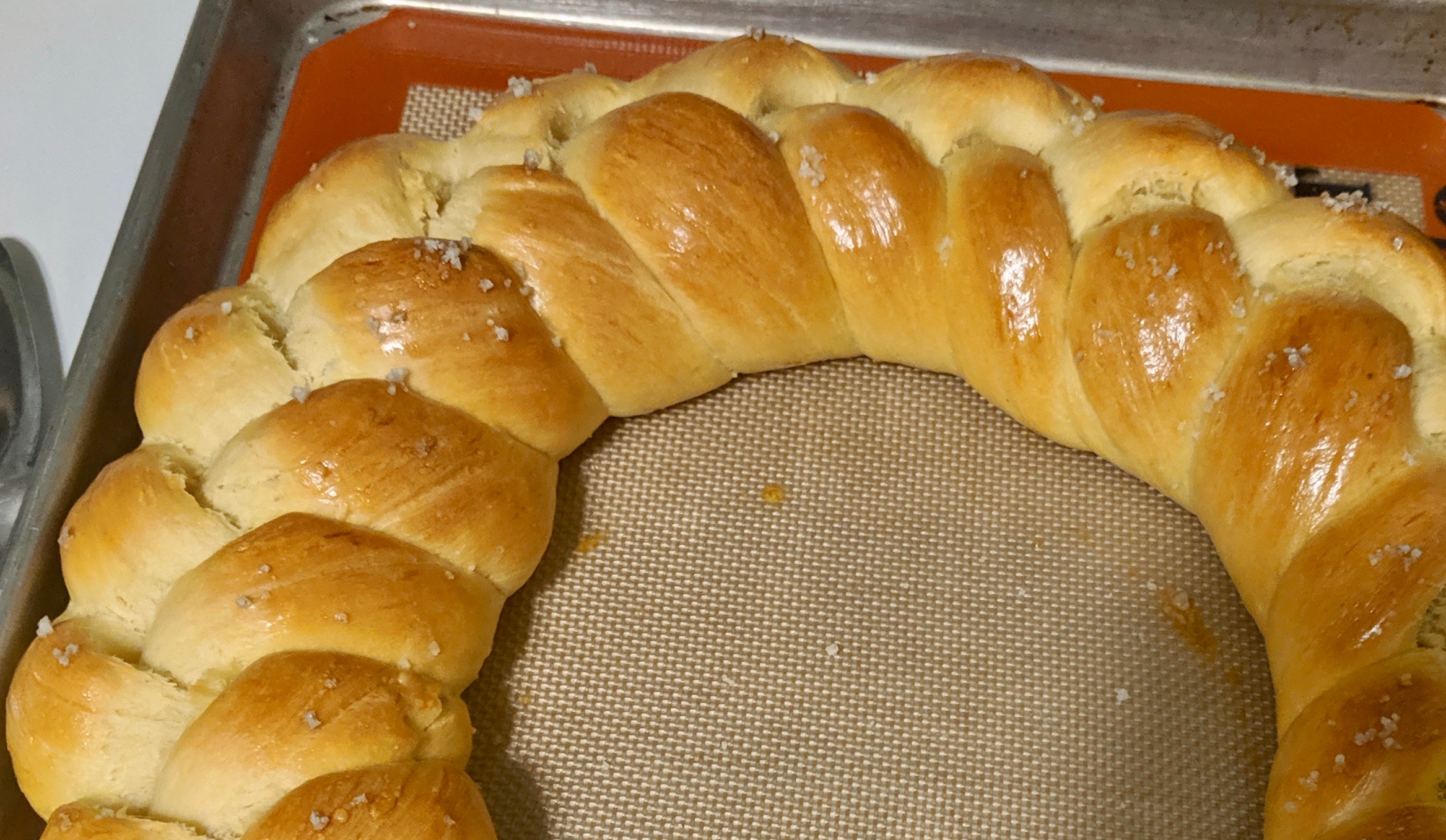Martinique– Pain au Beurre

It can be a challenge to think of a menu item from some random country across the globe, but you would be surprised with yourself if you stepped into our culinary shoes. Google is truly our friend, especially when it comes to an island like Martinique, considering that when most people hear what country we are doing, they respond with jerk chicken–– which is not Martinique at all.
Martinique is an island in the West Indies, nestled between Dominica and St. Lucia. The island is technically not a nation on its own. It is actually part of France. Thus, much of its cuisine is French and, in many ways, Antillean Creole. Even though Martinique is a region, not an independent country, we felt that its food story should be told at our table because of its cultural and culinary diversity.
Here is a look at our Martinique inspired menu:
- Chayote Gratin
- Colombo Coconut Chicken Curry
- Spicy Shrimp and Rice
- Creole Rice
- Pain au beurre Martiniquais
- Hobo Bread (not Martinique but still delicious)
This meal was a hit with our co-workers who joined us. We had a good mix of offerings and had a successful rice dish! I say this because, for a while, we struggled with the timing of many of our rice dishes. They tended to be under-done and crunchy. But the tomato based rice that accompanied the spicy shrimp was done to near perfection. And hey, that’s a feat for cooking in a garage!
The chayote gratin turned out delectable and creamy, as one hopes any gratin to be. The chayote (a tropical squash that resembles a wrinkled pear) was amended with a bit of potato in order to extend the servings for our lunch without inflating the cost of the dish, being that each chayote cost $1.49 each–– ouch! The mixture of the squash and potato was tossed with a fantastic mango salsa that had a lot of depth and character, with a slight bit of nuanced, cross-palate heat. Top this all with some cheese, parmesan in this case, and pop it in the oven. Ooey-gooey deliciousness. In my opinion, the best part of this dish was exposing everyone to chayote.
As a main dish, the coconut curry held its own. A hearty “stew” of chicken, potato, butternut squash, and eggplant with Columbo spices and coconut milk. Though I might like to see this dish with a touch more heat, it paired well with the rest of the meal, and when serving 30 people, spice can be a tricky thing. The ingredients of this dish land in the realm of “yes please” in my pantry, except for the eggplant. Typically I steer away from it, but this dish may have helped change my course on the vegetable. The texture suited the curry well and complemented the soft buttery feel of the squash.
For some reason, I have been on a bread kick for our meals lately. Last week, I made Omani Maldouf, a date flatbread, that I sent in with a colleague since I wasn’t able to make it to that meal. This week, I went with a pain au beurre. This is a leavened bread with a healthy dose of butter added to the mix. The end result is braided and served in a ring or, as they call it, a crown. The recipe that I used only called for an initial proofing of the dough. This meant that after dividing, rolling, and braiding, the bread went straight into the oven. This resulted in a very closed texture bread. In many ways this is an attribute you might not look for, but in this case I saw why it worked. The bread is traditionally used to dip into curries, thus it needs to have a texture that can hold up to moisture. Just think of dipping a bagel in soup versus a piece of white bread.
This bread recipe, which is very traditionally French, is one that I am going to save and use as a base recipe to develop on. I want to try a second proof to lift the braided layers and add a “fluffiness” to it. I also think that this dough has enough structure to add ingredients to amend the bread itself. Some that I am thinking of are: adding shallots and rosemary to the dough, wrapping prosciutto around one of the pieces of dough before braiding, or even rolling the dough pieces in a paprika oil before braiding.
I have always found braided doughs to be a lot of fun for experimentation. Due to the size of the dough pieces, you can alter it a bit without majorly affecting the bake time.
Next week we are going to be visiting the Central Asian nation of Tajikistan. I hope that you come along and experience the little piece of it that we can provide. Until next week…